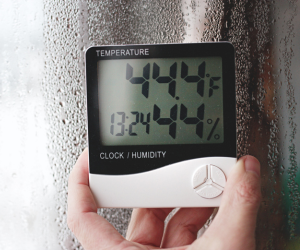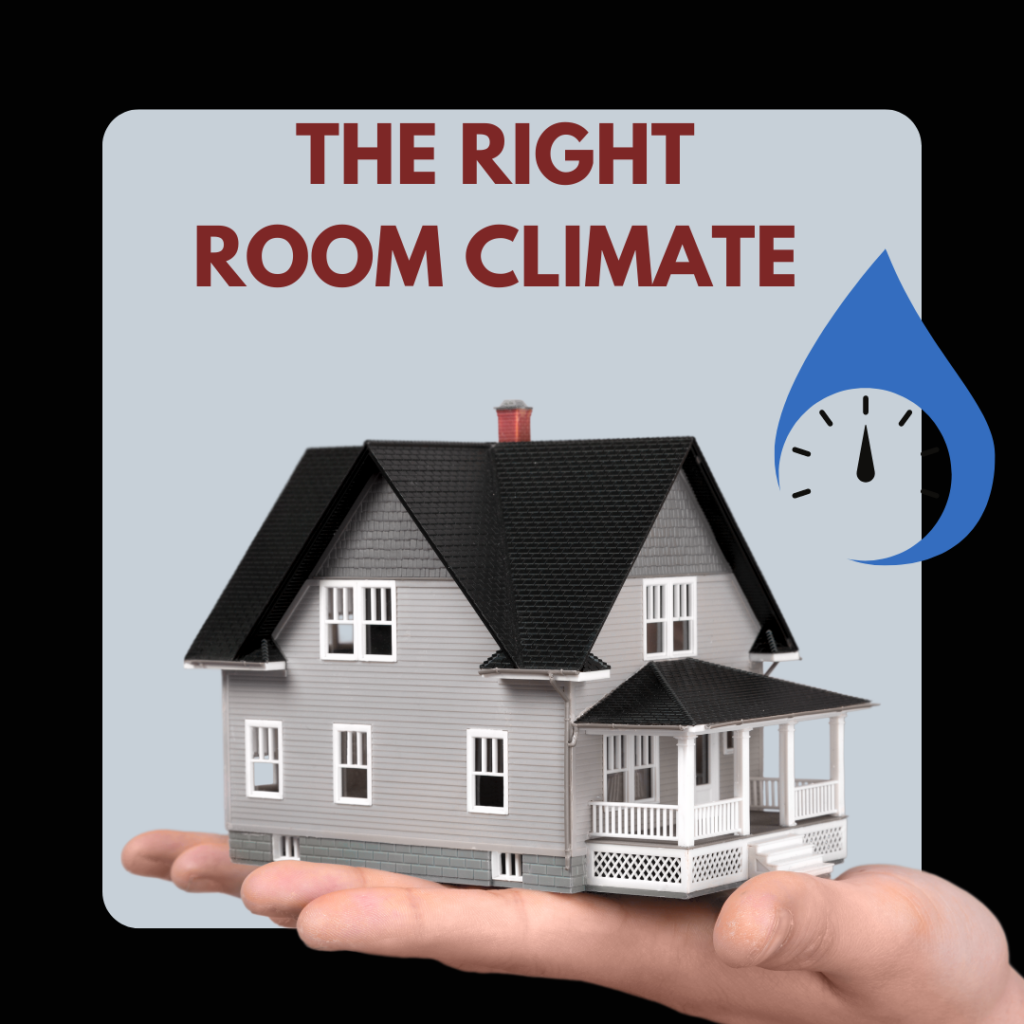Table of contents
Introduction
I can see the importance of ensuring a healthy indoor climate during the heating season when I change my cannula if I spend too much time in rooms with low humidity. So here is an essential tip for you in this short block (also applies to people without a cannula).
The right humidity
Especially during the heating season, it is important to ensure the air in heated rooms does not become too dry.
Values below 40% humidity are considered too dry. Heating falls below these values very quickly, so you should take countermeasures here. However, excessive humidity is also harmful as it can cause mould to form. More than 60% should be avoided here.
Options for air humidification
Humidifier: The most effective method of humidifying the air is a humidifier. Different types of humidifiers include vaporisers, ultrasonic humidifiers and steam humidifiers. The disadvantage is that they are high-maintenance and must be cleaned thoroughly all the time! The water must also be topped up regularly. In my room, where I spend most of the day (approximately 20 square metres), the 3-litre container must be refilled every 2-3 days to maintain a room climate of more than 40%. As we use distilled water to prevent limescale, this is quite time-consuming.
Humidifier with air purification:
This combination not only humidifies the air but also filters it and removes harmful particles, dust and allergens. Of course, this does not reduce the maintenance effort because the filters must be cleaned or replaced regularly.
Set up the water container:
Place a water container in heated rooms. The water gradually evaporates and thus increases the humidity. Placing a bowl of water on a radiator or near the radiator is best.
Plants:
Houseplants help to increase the humidity in rooms. But make sure that they are watered regularly!
Use a clothes horse in the room:
If you need to dry laundry indoors, use a clothes horse in rooms with too dry air. This humidifies the air and dries the laundry without using energy-intensive electrical appliances.
How can I measure the humidity?

If you use an air purifier or humidifier, it will usually show you the humidity on its display. Modern devices transmit the data to the smartphone, from where the control is carried out.
The disadvantage is that this data is measured directly at the humidifier.
Therefore, I measure the humidity at a second location using a hygrometer. You can find these in any good DIY store or, of course, in well-known online stores. You can use these as analogue or digital solutions – it doesn’t matter. The main thing is that you can constantly check the values.
What effects does too dry air have
You should not underestimate constantly dry air. I always see the effects of too-dry air when cleaning my cannula. Here, the secretion adheres to the cannula and dries relatively quickly. This also happens to the mucous membranes of your air pipes and irritates them. What effects can dry air have?
Respiratory problems:
As already described, too dry air can dry out the mucous membranes in your airways, leading to irritation, coughing and, in the worst case, respiratory infections.
Skin problems:
Low humidity dries out not only the airways but also the skin. The skin can react very sensitively to this, becoming brittle and forming fine cracks that can become inflamed. This triggers itching. The lips also dry out quickly and are more susceptible to various diseases.
Worsening of allergies and asthma:
Dry air can aggravate allergies, as dust and pollen are suspended for longer.
Nosebleeds:
The drying out of the nasal mucous membranes can lead to nosebleeds.
Feeling unwell and tired:
Headaches are also symptoms of arid air.
Sleep problems:
Dry air can also cause or exacerbate sleep problems.
Eye problems:
Dry air can dry out the eyes and cause irritation and redness. This is often very unpleasant, especially in combination with screen work. I also help myself with eye drops.
Important tips
- Ventilate regularly to let in fresh, humid air and replace the dry air. You can find out how to ventilate correctly here.
- Clean the rooms more often to remove dust and allergens. In combination with regular ventilation, this will significantly improve the quality of your indoor air.
- Drink plenty of fluids (water, tea) to compensate for the room’s dry air and replenish your fluid reserves.

